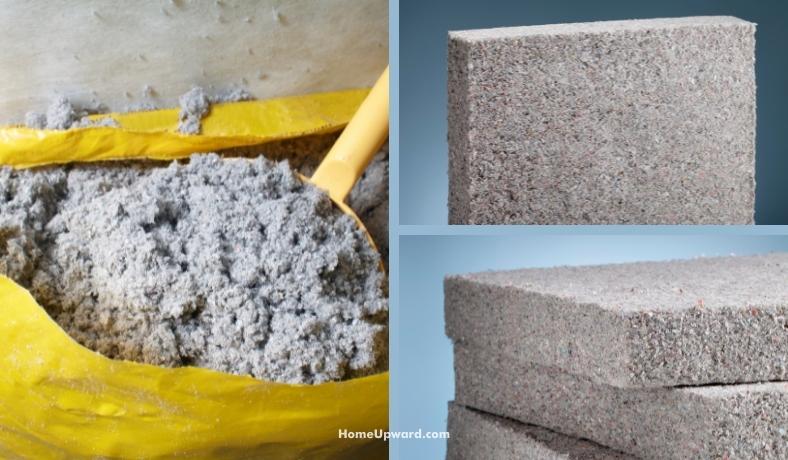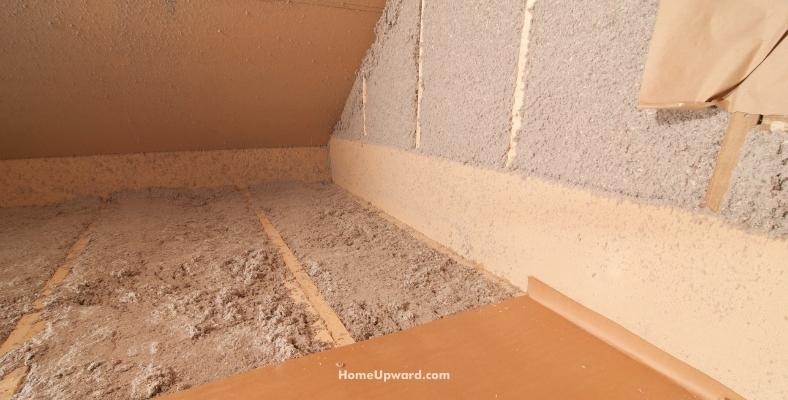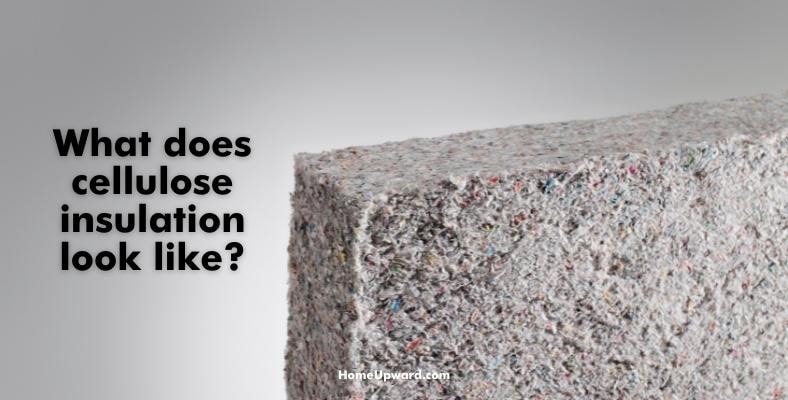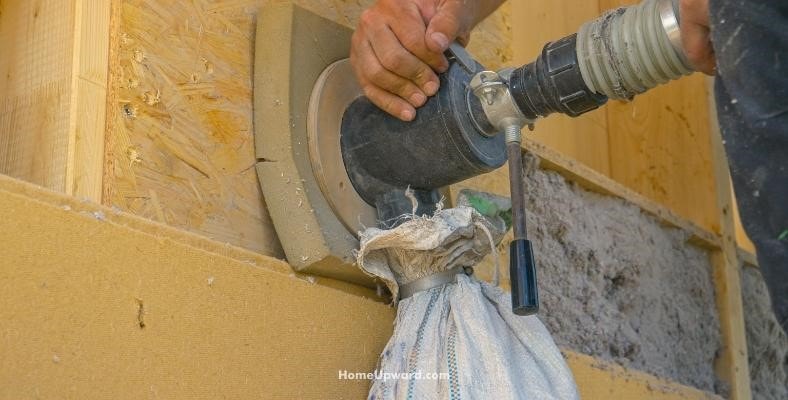Contents
What Is Cellulose Insulation Made Of?
Cellulose insulation is made up of recycled paper product material (mainly newspaper) and has a very high amount of recycled material making it up – around 82 to 85%. The source recycled paper is reduced to fine small pieces and then processed to turn it into fibers.
This creates a type of insulation that’s a good fit for packing tightly into small areas during construction. Minerals are added to help make it insect and fire resistant.
Independent testing has confirmed it’s safe, fire-resistant, and cellulose is approved by all building codes.
Is Cellulose Insulation Toxic?
Cellulose insulation is considered non-toxic. Cellulose insulation alone is not toxic but often the mineral borate that’s added can be toxic if a person is exposed to it or consumes it in high quantities.
Borate is normally considered safe for humans. Much like the insulation itself, you’d have to be exposed to quite a bit of it to experience any ill effects.
Another issue is the dust cellulose material can release into the air during installation and if it’s disturbed later. This dust can irritate your airways and cause breathing problems. Just like with fiberglass insulation, a breathing mask and other personal protection equipment (PPE) is recommended.
How Long Will Cellulose Insulation Last?
If installed correctly, cellulose insulation is a long-lasting form of insulation and should last around 30 years. However, in the real world it’s rare it will actually make it that long and usually needs replacing in about half that time.
The added borate ensures the insulation has sufficient insect resistance so issues with insects generally aren’t a problem. Like other types of insulation, it can grow mold over time when moisture collects or invite pests to create a nest inside in it. Its fluffy nature makes it attractive to rats, mice, and birds, for example.
Mold or pests are what cause the need to replace the insulation early.
Like every other insulation product, cellulose insulation is only as good as its installation. If it’s installed properly, it’ll last the longest. If improperly installed, unfortunately there’s a chance you’ll need to replace it sooner and the insulation won’t work efficiently either.
What Does Cellulose Insulation Look Like?
Cellulose insulation is a neutral color ranging from a type of brown to gray. It looks like a pile of shredded newspapers and when sold resembles densely packed bundles.
If you disturb the insulation it’ll release dust particles into the air so do bear that in mind.
How Does Cellulose Insulation Work?
- During installation, cellulose insulation gets packed into wall cavities where there’s no resistance to heat transfer. When done correctly this method creates a layer of high-quality insulation cover.
- Due to its density it reduces heat transfer and therefore helps keep warm areas warm and cool areas cool in your home, reducing energy use.
- Cellulose insulation also has the ability to reduce noise levels in your home.
How Much Does Cellulose Insulation Cost?
- Depending on the kind and scale of the project, blown cellulose insulation can range in price from $0.60 to $4.20 per square foot including installation.
- Wet cellulose insulation ranges in price from $0.60 to $2.00 per square foot. It works best for new buildings.
- Dense-pack cellulose insulates 1,000 square feet of wall space for $1.60 to $4.20 per square foot, or about $1,600 to $4,200. Older homes and outside walls are perfect for dense-pack insulation.
How Effective Is Cellulose Insulation for Heat Insulation?
Companies rate insulation with an R-value. This value measures a material’s ability to heat from flowing in and out of a house which is also known as heat transfer. A good insulation is one that increases energy efficiency by decreasing the amount of time an air conditioner or heater has to run to keep a house at the right temperature.
The R-value of cellulose insulation is 3.2 to 3.8, averaging at 3.5. This number is higher than fiberglass insulation and about on par with open-cell spray foam insulation, meaning its good for heat insulation.
Note that it’s not the best, however, as foam board and closed cell spray foam have higher R-values than cellulose insulation. Since different climates require different R-values per space insulated, some areas may do well with lower-rated materials.
Is Cellulose Better Than Fiberglass?
Cellulose and fiberglass insulation last around the same time. Likewise, both can grow mold and each type can also release harmful particles when disturbed. Fiberglass is made of glass, as the name suggests, and can cause irritation if you inhale particles while cellulose releases a less aggressive dust.
Cellulose is more effective than fiberglass at insulating. As fiberglass loses up to 50% of its R-value in very cold situations this makes cellulose a better choice for homes in cold climates especially.
Both insulation materials are eco-friendly especially compared to other forms of insulation like foam. The production of cellulose requires less energy than fiberglass while also being made of recycled material.





